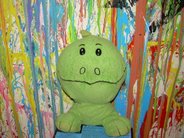I found this website through Google when I searched for mirror neurons and autism. Through all of the many articles I found this was among the very best for a few reasons. First of all the article is from an accredited university, it is a more recent article, and it is a clear, concise and easily understandable article. The author, Inga Kiderra, starts out by explaining to the reader what the function of mirror neurons are and why they are thought to be connected to autism. The mirror neurons are aptly named and are also sometimes called the “monkey see, monkey do” neurons. These neurons fire in the brain both when an individual sees and then does the same motion. Kiderra goes on to describe an experiment done by a group of scientists from UCSD
 with an EEG machine. The study was done on 10 male autistics and 10 control subjects. The experiment involved watching videos of a certain activity, like a waving hand, and then the individuals would wave their hands on their own while they were being monitored to see what area of the brain would respond to the EEG. When the participants waved their own hands the neurons fired, but when watching the video they did not. This suggests that autistics are unable to comprehend what others are doing around them and thus they are unable to essentially learn from their environments. This explains many of the problems autistic children encounter such as problems with speech, and personal interactions. Kiderra brings up the possibility of therapies involving mirrors to trick the autistic brain into interacting with itself. To conclude Kiderra admits that there is still much to learn and much to overcome but that there plenty of opportunity in this new research. Overall this article was a excellent and I recomend it for a general understanding of mirror neurons.
with an EEG machine. The study was done on 10 male autistics and 10 control subjects. The experiment involved watching videos of a certain activity, like a waving hand, and then the individuals would wave their hands on their own while they were being monitored to see what area of the brain would respond to the EEG. When the participants waved their own hands the neurons fired, but when watching the video they did not. This suggests that autistics are unable to comprehend what others are doing around them and thus they are unable to essentially learn from their environments. This explains many of the problems autistic children encounter such as problems with speech, and personal interactions. Kiderra brings up the possibility of therapies involving mirrors to trick the autistic brain into interacting with itself. To conclude Kiderra admits that there is still much to learn and much to overcome but that there plenty of opportunity in this new research. Overall this article was a excellent and I recomend it for a general understanding of mirror neurons. Kiderra, Inga. “Autism linked to mirror neuron dysfunction.” 30 Mar. 2005 Medical News Today. 25 Jan. 2007. http://www.medicalnewstoday.com/medicalnews.php?newsid=21971
Picture: A child with autism, wearing an EEG cap to measure brain-waves, watches video of a moving hand. (Credit: Lindsay Oberman)





